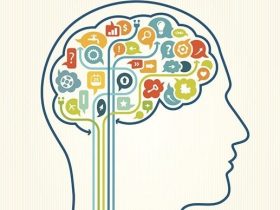Autism is challenging to define since there is no right or wrong answer. There is a general scientific definition of what autism tutoring is. Still, autism spectrum disorder (ASD) comprises many diverse characteristics that build up what we recognize as autism.
Autism is a type of brain development disorder that can be diagnosed based on the following signs, according to most experts:
- Habitual patterns of behavior
- Impaired social interaction and function
- Weird eating habits
There is no such thing as a “normal” degree of autism, just as there is no such thing as a “universal” diagnosis.
You may have heard of autistic youngsters who excel at the following:
- Piano
- Or can-do math
- Or else, memorizing
Some can draw intricate portraits, while others are still battling to learn the basic self-skills needed for human survival.
The amount of function your child has in the categories mentioned above determines the severity of autism.
This disease usually appears in children under the age of three, but symptoms typically develop by kindergarten.
Autism is not something that children “grow out of,” affecting them far into adulthood. So, how we address the symptoms of autistic children affects their educational and life outcomes.
Autism and Education: The Tutoring Relation
Your child was most likely at home with you or other caretakers until they were three years old, relying on their care and survival.
When children reach the age of three, they are most likely eligible for early prevention programs and can begin to transition to adulthood. For nearly half a century, special education programs have been accessible in the United States.
Educating children with autism is very different from educating a typical school population, and it necessitates innovative approaches to any academic issues that may develop.
Autism and Online Classes
The current year’s school return will be diverse for some adolescents. In light of the developing pandemic, a few school areas are settling on the web or half and half learning methodologies. Understudies, guardians, and instructors will deal with new issues because of this shift. All of us are learning together with regards to how to advance computerized training for understudies with mental imbalance.
We can’t highlight a lot of examination on supporting kids with chemical imbalance when they start internet learning, not at all like most subjects we notice. There isn’t a great deal of examination out there at this moment. Just four past overviews on web-based learning encounters for individuals with mental imbalance were found in an efficient writing investigation distributed in 2019. Notwithstanding, we’ve ordered a rundown of devices and thoughts that might help kids with a chemical imbalance and their families in changing.
Describe the scenario
Begin by describing why the school has made the switch to online learning. Then, explain to the student why online learning or a hybrid solution is required for the time being. Social stories may assist the autistic learner in comprehending the scenario and exploring any emotions that may emerge. As the school year begins, be prepared to discuss this frequently. Students may not fully understand how the changes will impact them until they have firsthand experience with them.
Set realistic expectations
Some students may find online learning difficult. They could miss their previous friends, teachers, and routines; others might like it better. Many of the social constraints that can feel overpowering or distracting are removed while learning through a computer screen.
It is critical to let both types of learners recognize that online learning is a temporary circumstance. They’ll have to return to in-person classes at some point.
Make a schedule
Many schools excel in providing children with a regular and reasonably predictable timetable. Many people with autism find it easier to relax when they know what is going to happen next. Setting and sticking to a timetable can help them get the most out of their online study. Set start and end timings for the school day, as well as breaks and lunches. Also, communicate with the child’s teacher to learn about the class schedule. A visual or textual schedule can be posted near where the individual studies. This allows the person to prepare for the upcoming task mentally.
Include the entire family
Not just the child with autism, but the entire family is affected by online learning. Siblings may be studying from afar as well. Parents may work from home or have less time to perform daily tasks due to their children learning at home. Everyone can benefit from a family-centered approach to managing online learning schedules and expectations.
To establish the best possible situation for everyone, discuss everyone’s needs and define boundaries and timetables. This could include agreed-upon study, work, and break periods. Quiet hours or redistributing tasks are two options.
Organize your resources
Many of your child’s existing supports may not follow them into the home learning environment. Modify your Individualized Education Plan and Behavior Intervention Plan for remote learning with the help of instructors and administrators. For any resources that your care team may be able to supply, contact them.
Remember that most of us, including teachers and counselors, are unfamiliar with the land. The adjustment to online learning can be made easier with open, clear communication and regular check-ins. Connect with your state and local education advocacy organizations for more tools and information.
Parting thoughts,
Special children need tutoring is adaptable in terms of both lessons and availability, and it attempts to deliver high-quality assignment help in real-time.
Free consultation from the “do my assignment online” service is the first step in assessing whether special needs tutoring is a viable choice for your child with autism. A special needs tutor will take the time to answer your questions, provide direction, and assist you in developing a plan to ensure your kid achieves academic success.
Read Also: https://www.sharepostings.com/digital-health-intervention-does-not-lower-heart-attack-risk/







Leave a Reply